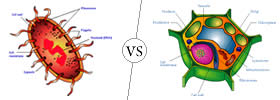Difference between Aikido and Hapkido
Key difference: Aikido is Japanese, while Hapkido is Korean martial art form.
 “Aikido” is a Japanese martial art forms, developed by Morihei Ueshiba (1883 - 1969) in 1942. It’s a self defense form, wherein the learner is taught great moves and turns, in order to protect him/her self.
“Aikido” is a Japanese martial art forms, developed by Morihei Ueshiba (1883 - 1969) in 1942. It’s a self defense form, wherein the learner is taught great moves and turns, in order to protect him/her self.
The name ‘aikido’ is formed of three kanji:
Ai – joining, unifying, combining, fit
Ki – spirit, energy, mood, morale
Dō – way, path.
Aikido is said to be a way of achieving the harmony, it includes various technical skills and actions. The master Ueshiba, used to train the art with number of combat systems such as the aikijujitsu, sword, spear and staff. Along with the actions, it also includes self defense and personal development. It is practiced on the principles of harmony, and non-resistance. It comprises of footwork, which are practiced in a linear and circular manner. These actions off-balances the attacker and apply the joint-locking or throwing techniques. In modern living, this art form is considered to be a great way to improve the physical fitness and gain harmony. It also helps in reducing the stress level in an individual’s life.
 “Hapkido” is Korean martial self-defense art form. Hapkiyoosool are the physical combat techniques, practiced in the art forms. The term “ Hapkido” is also spelled as, hap ki do or hapki-do; Hangul: 합기도; Hanja: 合氣道, is a dynamic and highly eclectic Korean martial art form. The art form was actually started by Choi Yong Sul (1899-1986), and was followed by his followers like the Suh Bok Sub, who was Choi's first student. Ji Han Jae popularized the form and made it known to the public.
“Hapkido” is Korean martial self-defense art form. Hapkiyoosool are the physical combat techniques, practiced in the art forms. The term “ Hapkido” is also spelled as, hap ki do or hapki-do; Hangul: 합기도; Hanja: 合氣道, is a dynamic and highly eclectic Korean martial art form. The art form was actually started by Choi Yong Sul (1899-1986), and was followed by his followers like the Suh Bok Sub, who was Choi's first student. Ji Han Jae popularized the form and made it known to the public.
The term hapkido translates to "The way of coordination and internal power." It is clearly meant as:
"Hap" means Harmony.
"Ki" means Body and mind coordination, or "energy" according to physics.
"Do" means "Way" (it reflects to, “a path to follow, a way of life and not a religion”).
"Yoo" means "soft" or "circular"
"Sool" means "technique".
Hapkido was generally meant for the military art forms. It basically consists of fighting styles and actions. It is a self defense technique and not a specialized form of art. Along with these techniques, the art form also comprises of soft techniques which are borrowed from the Aikido art form. The technique also utilizes the traditional weapons, such as knife, sword, rope, jool bong (nunchaku), cane, short stick (dan bong), and staff (bong, gun, bō) which may vary according to the type of examinations. Its practice attempts to integrate seven areas: striking, avoiding and blocking, holding, throwing, internal techniques (meditation, breathing, internal energy development) and healing. It contains both long- and close-range fighting techniques, utilizing jumping kicks and percussive hand strikes at longer ranges, along with the pressure point strikes, joint locks, and throws at closer fighting distances. The art form emphasizes more on the circular motion, redirection of force and the control over the opponent.
Comparison between Aikido and Hapkido:
|
|
Aikido |
Hapkido |
|
Origin |
Aikido is a Japanese martial art form. |
Hapkido is a Korean martial art form. |
|
Meaning of the words |
Ai, ki and do. Ai refers to the Japanese culture, ki is breath or spirit and do is a way or doctrine. |
Hap, ki and do. Hap is harmony, ki is mental energy or spirit and do is a way or doctrine. |
|
Emphasizes more on |
Basically, the art form emphasizes more on throwing techniques. |
Basically, the art form emphasizes more on joint locks, punches, strikes, and kicks. |
|
Techniques |
Techniques use large, fluid circles, and wider motions, with much more graceful steps.
|
Techniques are done with small circular motions, to fast complete conclusions. Some Kicking is also practiced. |
|
Types of attacks |
Here, attacks tend to be softer, fluid, and stylized. |
Here, attacks are performed with sharp precision at full power. |
|
Purpose of attacks |
Techniques are designed with the purpose of defending and blending. The attacks are generally in a neutralize form, i.e. they are carried out with no intention of hurting the opponent. |
Techniques are designed to cripple or kill. Control is used according to the circumstances. |
|
Type of knowledge taught |
Pain is applied with restraint, in small doses. Strikes taught to some degree, but are discouraged. |
Pressure point knowledge is necessary. Techniques make great use of pain. Strikes are frequent. |
|
Focuses on |
It concentrates more on the defense point of view. |
It concentrates totally on aggressive defense and martial art point of view. |
|
Works on Principles of |
Emphasis on peace, love, harmony, friendship, and Aikido precepts, as taught by Morihei Ueshiba. |
Discipline, harmony, faithfulness and austerity are emphasized, with respect for Hapkido. |
|
Developed |
It was earlier developed and originated as compared to Hapkido. |
It was developed after the Aikido. |
|
Foundation |
Aikido International Foundation |
Korea Hapkido Federation |
Image Courtesy: superaction.com, wallstreetfitness.com.br









Add new comment